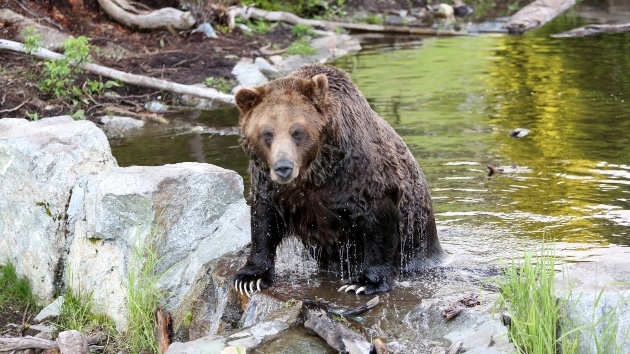Wild birth of critically endangered black rhino in Kenya dubbed a ‘conservation success’ by wildlife researchers
Written by ABC Audio ALL RIGHTS RESERVED on March 29, 2024

(KENYA) — A baby eastern black rhino has been born in Kenya, an event wildlife researchers are dubbing as a conservation success for the critically endangered species.
The calf, estimated to be 6 months old, was discovered in the Chyulu Hills in southern Kenya via a complex system of cameras and motion-sensor monitoring rangers in the region, Amy Baird, deputy director of Big Life Foundation USA, a conservation nonprofit, told ABC News.
The birth is considered rare because there are only about eight individuals in the small population of rhinos that live in the region. The rangers “didn’t quite believe their eyes” when they first saw the baby while checking the feed, Baird said, adding that most rhino calves are born in conservation areas.
The Chyulu Hills are a unique and remote ecosystem and is very difficult to monitor, making the discovery even more exciting, Baird said. The calf even “disappeared” for a couple of months, which made the conservationists nervous since rhino calves are so vulnerable at the newborn stage, she added.
“When they’re so small, they have to stay very close to their mothers, and there’s a lot of predators and other situations,” Baird said.
But the baby, which has not yet been named, was spotted again in February, putting the researchers a bit at ease due to its overall healthy condition and growth. The calf has been seen following its mom around and learning the ins and outs of its natural bush surroundings, according to the nonprofit.
The rhino calf will be given a name once rangers are certain that he or she is thriving ad going to become an established member of the population, Baird said. Researchers believe his parents are a female named Nontoyie and a male named Dickson, Baird said.
The rangers have also been unable to determine the calf’s gender so far, according to the nonprofit.
There are less than 1,000 eastern black rhinos still living in the wild, the researchers said. Rhino populations in Kenya have been threatened for decades due to poaching and trade of rhino tusks, which contain keratin.
The 1980s and early 1990s was the last time eastern black rhinos were thriving in the Amboseli ecosystem in southern Kenya, Baird said. For a long time it was even believed that they were functionally extinct from the region, but when rangers patrolling the remote portion of the region saw footprints embedded in an area of lava, rock and sand, they realized some rhinos had survived, she said.
An increase in monitoring and anti-poaching efforts have likely contributed to the survival of the population as well, Baird said. There have been no poaching events of rhinos in the areas since 2015. Rangers are also making sure the rhinos have the resources they need to survive, including three water points to provide drinking water.
But the conservationists are not hopeful to the threat of poaching being eliminated completely.
“There’s always going to be a risk of poaching, just given how valuable rhino is on a black market,” Baird said.
Black rhinos are listed as critically endangered on the International Union for Conservation of Nature’s Red List of Threatened Species.
Long gestation periods of 13 to 15 months and then recovery period of another two years make it difficult for populations that were nearly wiped out to recover, Baird said.
“The program to protect them has really grown,” Baird said.
Copyright © 2024, ABC Audio. All rights reserved.
 KVSP
KVSP 



